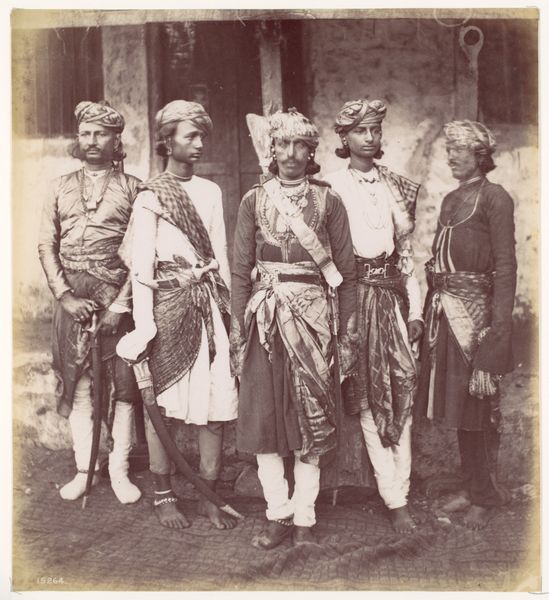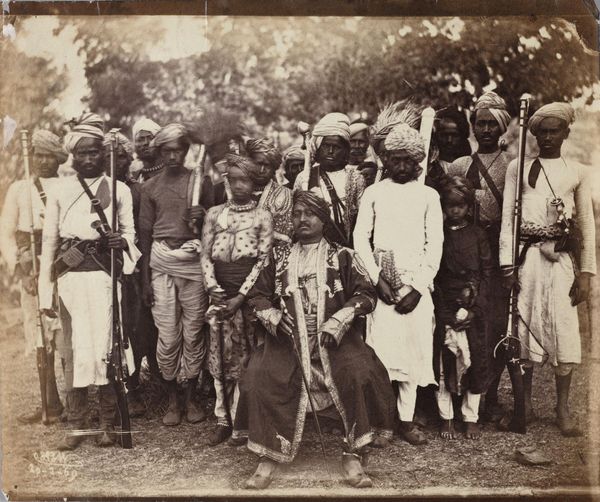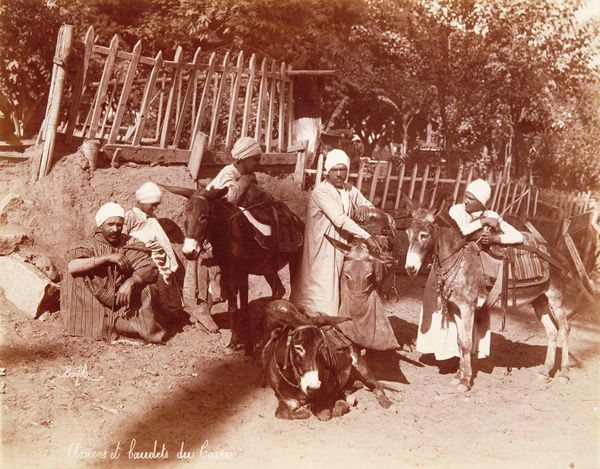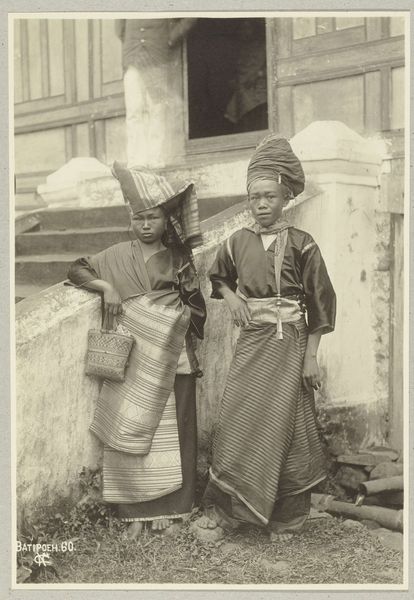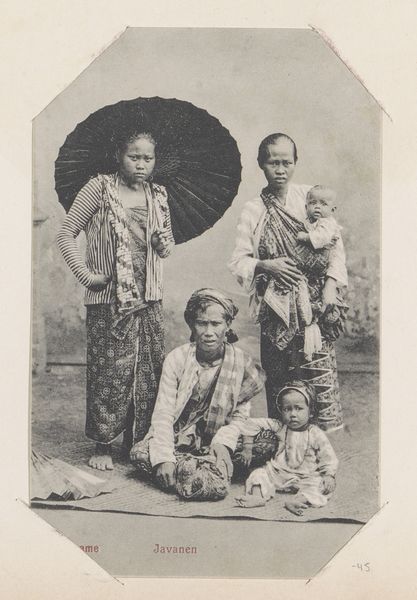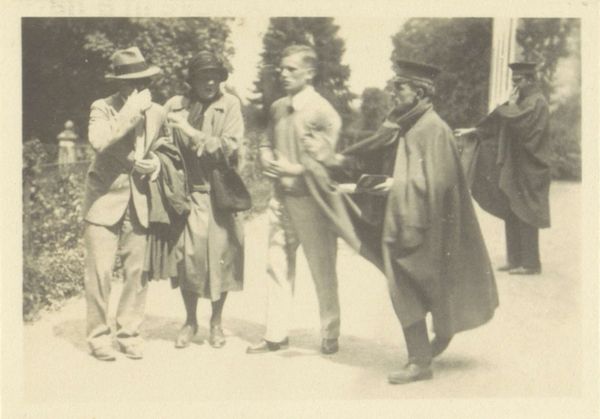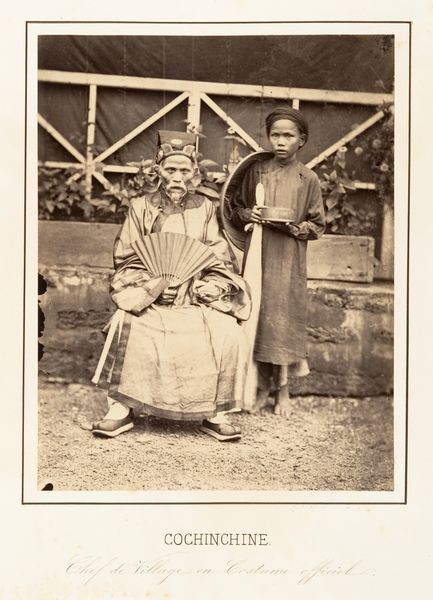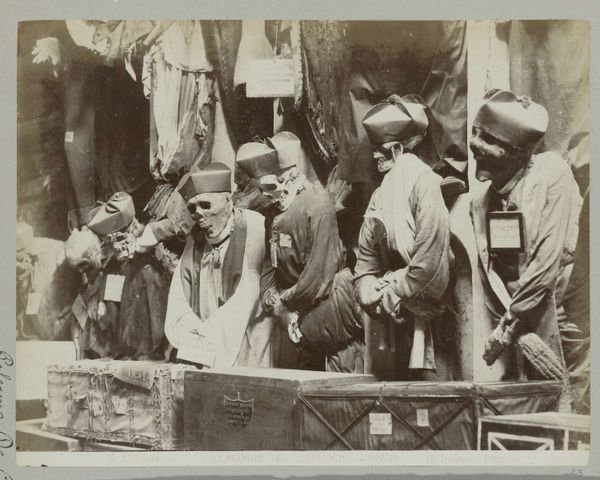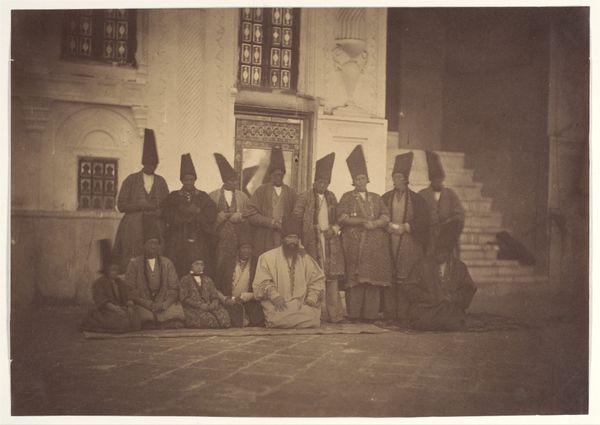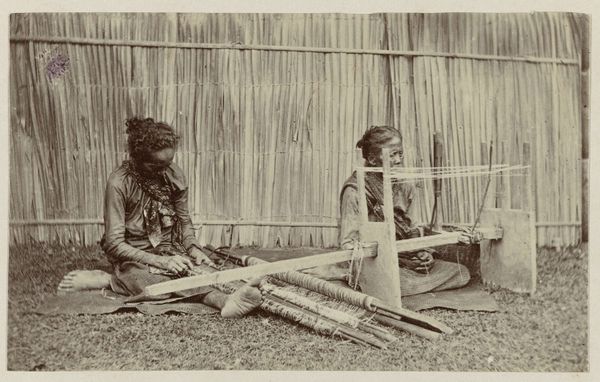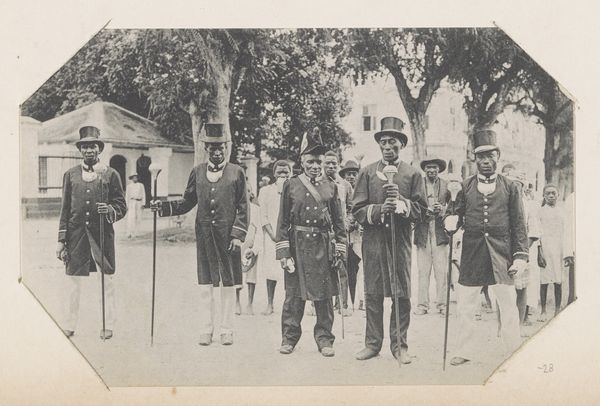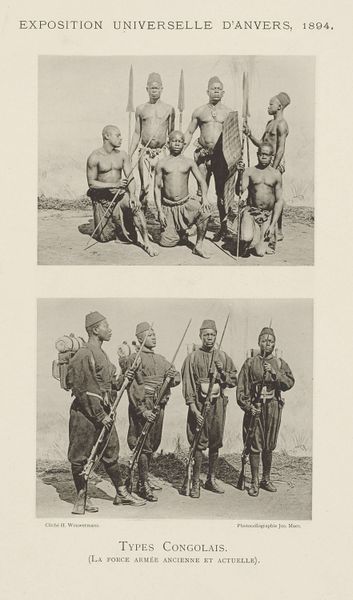
photography, gelatin-silver-print
#
portrait
#
african-art
#
indigenism
#
photography
#
group-portraits
#
gelatin-silver-print
Dimensions: height 158 mm, width 218 mm
Copyright: Rijks Museum: Open Domain
Curator: This photograph, "Javaanse mannen in uniform," likely taken between 1867 and 1910, by Kassian Céphas, presents a group of Javanese men in what appear to be ceremonial uniforms. It’s striking how the individuals’ gaze meets ours. Editor: It is indeed. I’m fascinated by their attire—the blend of what looks like military jackets and traditional patterned sarongs. What strikes me is the tension between formal portraiture and the colonial context. What do you make of it? Curator: That's a key tension to observe. Consider this through a postcolonial lens. Céphas, as a Javanese photographer, was operating within a Dutch colonial system. This work, while seemingly a formal portrait, could be interpreted as an act of asserting Indigenous identity and agency. How do you see their direct gazes fitting into this narrative? Editor: It's as if they're both acknowledging the power dynamics and simultaneously resisting them. The contrast between the imposed uniforms and their bare feet highlights that tension, perhaps? Curator: Precisely. Their self-representation through clothing reflects a negotiation with colonial power structures, while simultaneously emphasizing their own cultural identity through the sarongs and those intense stares. Does that negotiation read as resistance, compliance, or something more nuanced? Editor: More nuanced, I think. It suggests a complex relationship. Seeing this photograph, and knowing Céphas' position, makes me consider how the act of documentation itself can be a political statement. Curator: Yes, precisely. Photography provided a means for self-definition. Looking at the attire here is an excellent portal for understanding the cultural exchanges between colonizer and colonized and what is revealed when one decides to look back. Thank you for pointing this out! Editor: Thank you! I now see how focusing on their attire and gaze reframes our understanding of colonial-era photography and identity.
Comments
No comments
Be the first to comment and join the conversation on the ultimate creative platform.
